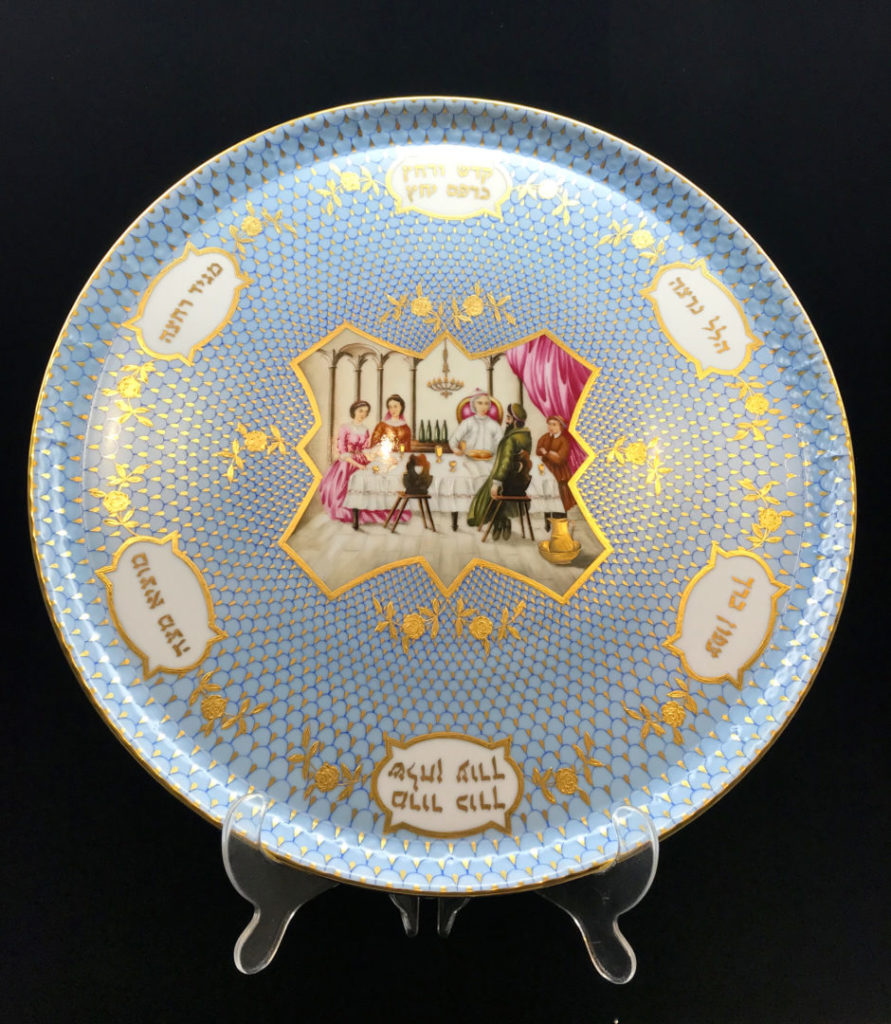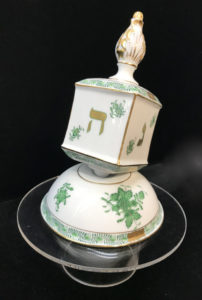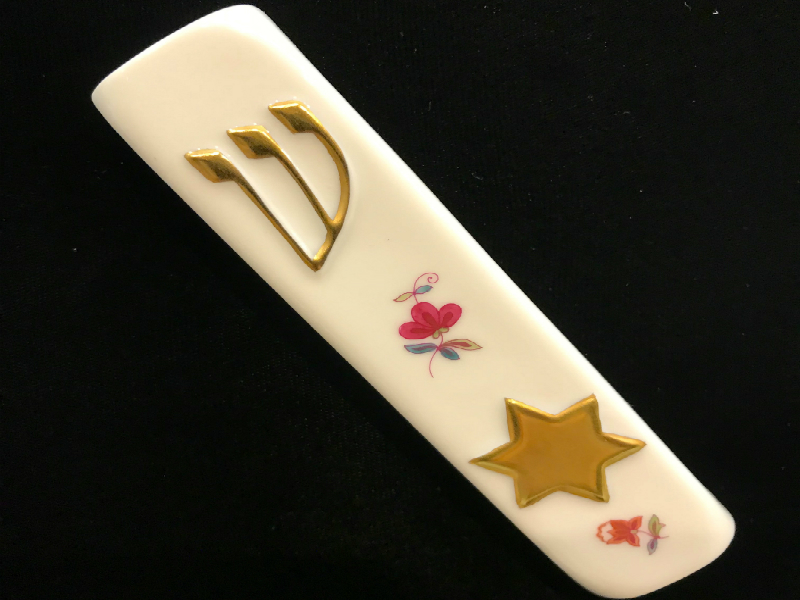A rare collection of Jewish heritage works by luxury Hungarian brand Herend is on display for the first time in North America at the Reuben & Helene Museum at Toronto’s Beth Tzedec Congregation.
Herend’s hand-crafted and hand-painted porcelain has been favoured by such members of the aristocracy as Queen Victoria, Lady Diana and the Baron de Rothschild family.
At Beth Tzedec, the museum’s showcases are filled with delicately fashioned Judaica that has come directly from Hungary. The exhibition includes seder plates, figurines, Kiddush cups, mezuzot and porcelain dreidels.
Many of the designs and patterns of the pieces on display date back to the mid-19th century.
The Herend Porcelain Manufactory, which has been operating for almost 200 years, is based in the town of Herend, about a two-hour drive east of Budapest.
The company was started as an earthenware factory in 1826, but its founder, Vince Stingl, went bankrupt. His creditor, Mór Fischer, took control of Herend in 1839, and it flourished and garnered an international reputation under his leadership.
Fischer was Jewish and created some intricately designed seder plates, which are part of the exhibition at Beth Tzedec. They can still be purchased today.

In fact, the majority of Herend seder plates were designed in the 19th century. “They are so unique and artistic they are worthy of an exhibition,” said Rita Rubin, general manger of Herend Canada.
Rubin and her family immigrated to Toronto from Hungary about 12 years ago. They took over representation of the company in Canada from another Hungarian Jewish family who had introduced Herend to Canada about 25 years ago.
In the early years under Fischer’s leadership, the company did not have its own patterns. Rubin said that at that time most porcelain ware was imported from China by the aristocracy, and pieces often broke during the shipping process.
Fischer created a repair business by producing porcelain replacement pieces. The company was able to reproduce the porcelain patterns of the Ming Dynasty for its clients.
Eventually, Herend created its own patterns by mixing the various Chinese motifs and symbols together in original designs. The company became the purveyor to the German Habsburg dynasty.

Rubin said Fischer recognized that expansion of its market entailed international exposure, so he brought his porcelain ware to international exhibitions.
“He rented a booth in both Vienna and Paris. The 1851 Great London World Exhibition made Herend world famous.”
Queen Victoria attended the exhibition. She received a lot of gifts from the exhibitors, including Fischer, but “She insisted on buying her own set of (Herend) dishes,”said Rubin. “It was a huge honour for Fischer. He was the one who brought the dishes to her.”
A modernized version of the peony and butterfly design that Queen Victoria purchased is one of Herend’s best-selling patterns, Rubin said, adding that the company is proud of the connection it has been able to maintain with the British royal family.
One of the patterns on display at Beth Tzedec features birds, tree branches and a necklace hanging among the leaves. Rubin said the set was commissioned by the Rothschilds, because according to family lore, some birds had flown through an open window and carried off a necklace, dropping it on a tree branch.
The Rothschilds thought the necklace had been stolen, so they memorialized the story.
Rubin noted that Herend is one of only two companies that still hand-paints all its porcelain. Each colour is created through a secret recipe and every piece undergoes three firings.
Herend runs a three-year training program, in which students have to learn to paint thousands of patterns. Of the 1,500 artists on staff, only 15 have reached the status of master artist, which Rubin said takes 10 to 20 years to achieve.
She credited a consul general with keeping the company going, albeit at a limited capacity, during the Second World War, calling its survival “miraculous.”
After the war, the Communist government took over the company, but today, Rubin said Herend is a private company with 75 per cent of its shares owned by the company’s management, artists and workers.
The Herend exhibition at Beth Tzedec runs until Jan. 5, 2020.
